Traveling the Italian Wine Route, Part 3: Eating Well in Italy
Filed under: Guidebooks, Journal, Restaurants, Travel - Italy, Travel - Planning, Wine Bars
This is the third part in a 3-part series on how to plan and travel well during your next trip to Italy.
Think Local. Eat local.
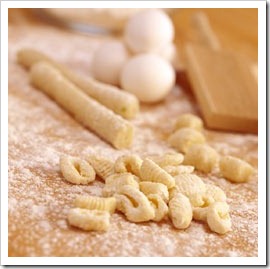 When you're traveling in Italy, eating the local cuisine will be a memorable highlight of your trip if you know where to look. Italian food evolved regionally, and there are few dishes that truly span the entire peninsula. Sure, pizza can be found everywhere, but you haven't lived until you've tried the real thing at da Michele in Naples. And ragù Bolognese meat sauce is superbo in Emilia Romagna, and an abomination in Venice. Go local — you will be much more satisfied eating the cucina tipica of the area.
When you're traveling in Italy, eating the local cuisine will be a memorable highlight of your trip if you know where to look. Italian food evolved regionally, and there are few dishes that truly span the entire peninsula. Sure, pizza can be found everywhere, but you haven't lived until you've tried the real thing at da Michele in Naples. And ragù Bolognese meat sauce is superbo in Emilia Romagna, and an abomination in Venice. Go local — you will be much more satisfied eating the cucina tipica of the area.
While much of French cuisine can be about butter-based sauces served over rather complex dishes, the Italians take a more purist approach. An Italian chef worth his salt lets the ingredients speak for themselves, using only the freshest ingredients prepared in the most simple way. For example, the Tuscans adore the dreamy Pappa al Pomodoro,
a soup prepared from diced tomato, a little ground onion, carrot and celery, and some olive oil — with a few stale bread cubes added at the end of the cooking. In Puglia, a simple dish of boiled and puréed fava beans with olive oil makes me swoon. And the Gnocchi con Pesto along the Cinque Terre in Liguria shows just how much you can do with a few potatoes, some basil, garlic, pine nuts and a little olive oil. Simple and humble ingredients that sing in harmony when brought together.
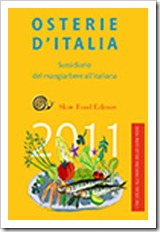 Finding the best local food. Some of my fondest travel memories in Italy center on intimate meals shared with friends at small Italian osterie and trattorie that are off the touristic track. When we travel, we always carry a current copy of Osterie d'Italia, a foodie's dream guidebook to the most genuine and honest restaurants that cook in the local style. Published and updated annually by the staff at Slow Food, this 800+ page guidebook is your ticket to excellent food and wine in a convivial atmosphere. While the book is written in Italian, anyone can find the top osterie, trattorie and enoteche in every region in this book, with a listing of their local specialties and easy contact information. I recommend that you buy the guidebook online at the Slow Food Italy website, or you can try to find a copy at a bookstore while you're in Italy (N.B.: this book sells out every year. I am looking into how to source the book from Slow Food directly to the states; if you're interested in buying a copy annually, leave a comment below).
Finding the best local food. Some of my fondest travel memories in Italy center on intimate meals shared with friends at small Italian osterie and trattorie that are off the touristic track. When we travel, we always carry a current copy of Osterie d'Italia, a foodie's dream guidebook to the most genuine and honest restaurants that cook in the local style. Published and updated annually by the staff at Slow Food, this 800+ page guidebook is your ticket to excellent food and wine in a convivial atmosphere. While the book is written in Italian, anyone can find the top osterie, trattorie and enoteche in every region in this book, with a listing of their local specialties and easy contact information. I recommend that you buy the guidebook online at the Slow Food Italy website, or you can try to find a copy at a bookstore while you're in Italy (N.B.: this book sells out every year. I am looking into how to source the book from Slow Food directly to the states; if you're interested in buying a copy annually, leave a comment below).
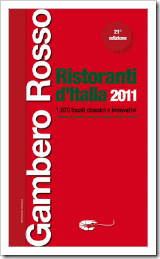 Another very useful guide for Italian food enthusiasts is the Ristorante d'Italia annual dining guide. Published by Gambero Rosso in Italy (the same folks who bring you the Italian Wines annual guide), this book offers a numerical rating system that helps you find some of Italy's top-rated restaurants. With top ratings come top prices, so if you're not in the mood to drop $100 per person on a magnificent meal, use your Osterie d'Italia guide to find superb local cuisine at reasonable prices.
Another very useful guide for Italian food enthusiasts is the Ristorante d'Italia annual dining guide. Published by Gambero Rosso in Italy (the same folks who bring you the Italian Wines annual guide), this book offers a numerical rating system that helps you find some of Italy's top-rated restaurants. With top ratings come top prices, so if you're not in the mood to drop $100 per person on a magnificent meal, use your Osterie d'Italia guide to find superb local cuisine at reasonable prices.
When dining out in Italy, here are a few recommendations that will make your meals more pleasant:
- Make a reservation. The restaurants found in Osterie d'Italia and Ristorante d'Italia are justly famous with the locals. To ensure that you have a seat, it's best to make a reservation. You can have your hotel make the call for you.
- Eat like an Italian. Meal times vary up and down the peninsula, but the only people eating lunch at noon and dinner at 6PM are the tourists. Dine like an Italian and enjoy a long lunch starting at 1PM, and dinner at 8 or 9PM. For breakfast, have a cappuccino and a small pastry. And remember that in Italy it's a brutta figura (bad form) to drink a cappuccino or caffe latte after 11AM.
- Try the local specialty. If you're not sure what to order, let the waiter or chef (who are sometimes one and the same) select for you. Teresa and I regularly let the house order for us — they know what's in season and ideal at the particular time of year you are visiting. We've never been disappointed.
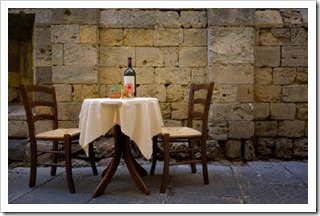 Blissful travel.
Blissful travel.
When you travel, be sure to immerse yourself in the daily rhythm of life in Italy. Take your morning cappuccino and cornetto (croissant) at the corner bar with the locals. Try an assaggio (small tasting) of wines at a local enoteca and marvel at how the wine communicates the essence of a small patch of land and the caring hand of its maker. Sample what's in season at a family owned osteria and say hello to the nonna in the kitchen who is sharing her prized family recipes with you. Savor the magic of the moment.
Buon viaggio!
You can find Part 1 here: Pick the best Italy travel itinerary and guidebooks during your travel planning.
And Part 2 is here: Wine Tasting at Your Favorite Italian Producers.
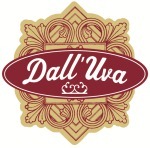 Have a favorite place in Italy?
Have a favorite place in Italy?
Do you have a special restaurant, location, or foodie tip you’d like to share with us? Join the conversation and don't be bashful, we'd love to hear your thoughts. If you have a question about Italian wine, food or travel, ask away.
If you like this Wine Journal posting, please share it with friends.
Ciao!
Michael
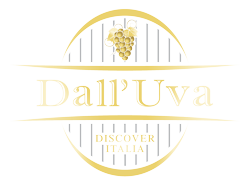
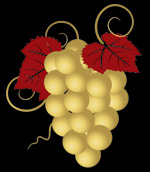
Hello, my father, before he died, gave me his personal wine bottle, called a “carafone” [forgive spelling]. I wonder if you know of such a bottle, and could you let me know how I could obtain one, It is of the most importance. Thank You
Domenic
Hi Domenic — thanks for replying, I am not familiar with the bottle type you’re referring to. I’m guessing it’s a “big carafe” as “carafe” in Italian is “caraffa” and a big one would be a “caraffona” if my Italian is correct.
Do you have a picture of this wine bottle? Was it jug shaped? Perhaps it was a large wine storage jug that’s used repeatedly. The closest thing I can think of would be a small demijohn, or “demigiana,” but it could have had a local name (possibly caraffone).
I’d suggest doing some googling to see if you can find something similar. Check out ebay.it as well, there may be some antique wine bottles that look like what your father had. Most ebay-ers in Italy will ship it to you, though it may cost you a bit.
Best of luck.
Michael